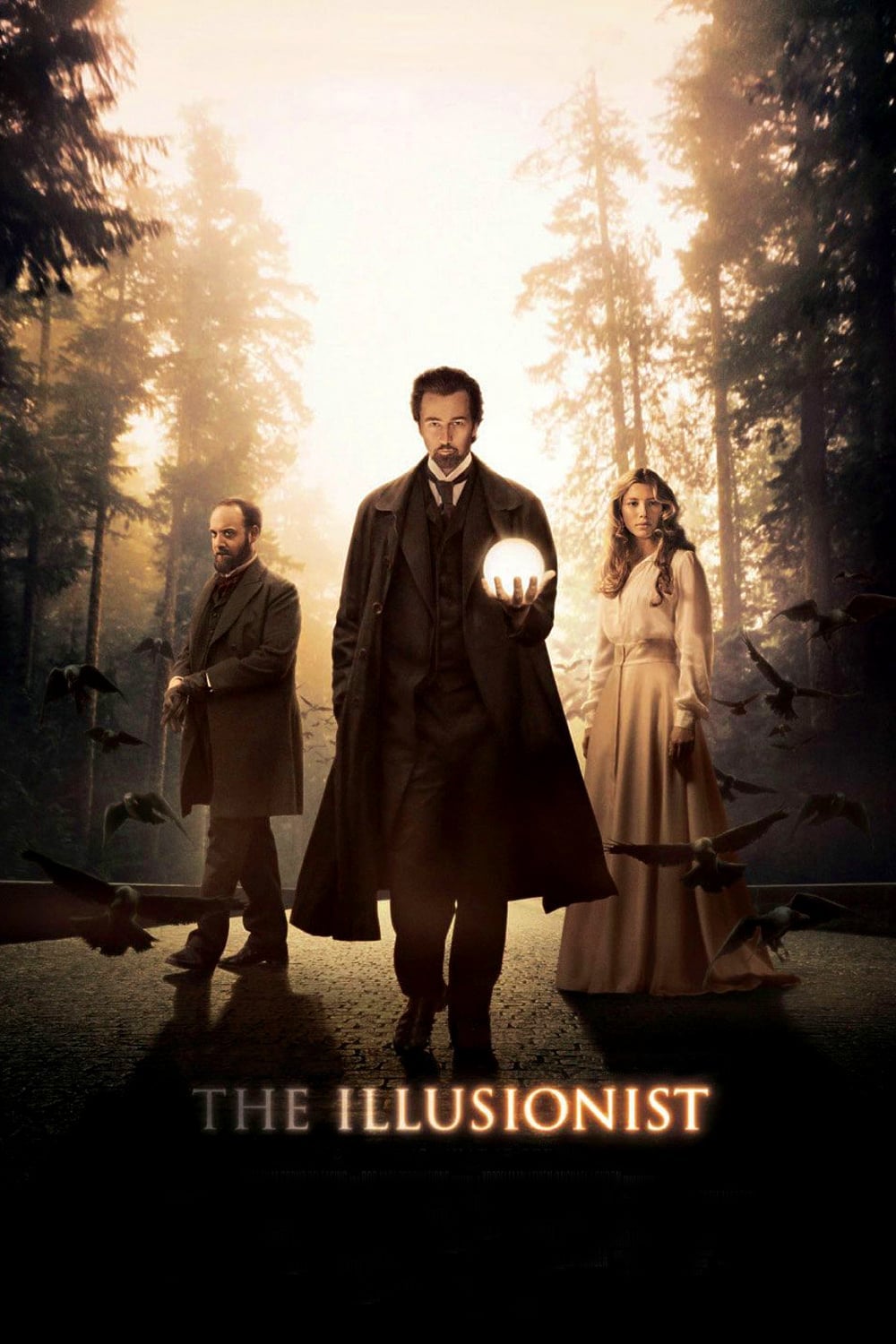
With his eye on a lovely aristocrat, a gifted illusionist named Eisenheim uses his powers to win her away from her betrothed, a crown prince. But Eisenheim's scheme creates tumult within the monarchy and ignites the suspicion of a dogged inspector.
13 May The Illusionist (2006)
Flight Club
We know what’s coming with this and we even know how. At least I think most viewers will.
It is a con movie, but with more explicit folding. In the usual con genre, there is a mark who is fooled along with us the viewers. In this version, the con is literally a show on stage, a device that makes the con more folded: we watch a show (the movie) with a rapt audience (who we join and emulate) who watch the show that contains the con.
At the end, we are satisfied.
The con genre is something that spun out of noir, the unique invention of cinema, actually American cinema as a sort of innovation on the order of jazz in its place in music.
In noir, there are two worlds, one being the world of the folks we watch. These poor folks are visited by amazing coincidences and odd causal mechanics. There is a capricious fate that seems to bend the world the actual way the world works in order for there to be an engaging story.
The other world of course is the world of the fate, the gods and goddesses whose presence implicitly makes those bends. The world we watch is bent because we watch it. Twist and turns are there not because they make sense or reward the people they happen to, but to us. Into this world we slide, lubricated by our curious eye, teased a bit by exaggerated photography.
The con movie is also an American invention, I think, a child of noir. In this derivative, some of the characters become gods, sitting on our side, in our world. The other world remains haplessly manipulated. In the best of the con movie, it is doubly folded where we find at the end that we have been fooled ourselves, that we are in the watched world.
Now back to this.
Here come the spoilers.
If you watch it without paying attention, you will see a teen love affair. During a rendezvous they are interrupted and the girl beseeches her lover to “make them disappear.” She is dragged away and he watches helplessly.
Then the story proper begins. We see him re-encounter his lost Sophie and through time rekindle the love, then plan an escape. That plan is an elaborate con, complete with a mark and a designated watcher to whom the con is revealed at the end. Happy happy are our couple and the gauzy ending leaves us with a smile.
But there’s a strong suggestion that real magic is involved here. Real magic.
In an ordinary con movie, you go back through the events you see and re-register them. In fact, our designated viewer a police chief does this before our eyes. In a regular con movie, all these line up, they make sense in our new context.
But if you see this, you will see that they do not. There is a double con at work here. Our illusionist stages a version of the killing (in the mirror, on stage) before he is reacquainted with his love, just after he asks for a volunteer and she surprisingly is volunteered.
Hmm. If there was a con, it started here, or before here. Follow that thought back to the teens in peril and imagine what we see as a movie as the enclosing illusion of the movie. Then it makes sense that as the girl, they chose to make Biel up and light her to look uncannily like a young Cate Blanchett, playing a young Elizabeth to a young magical writer.
Posted in 2006
Ted’s Evaluation — 3 of 3: Worth watching.


No Comments